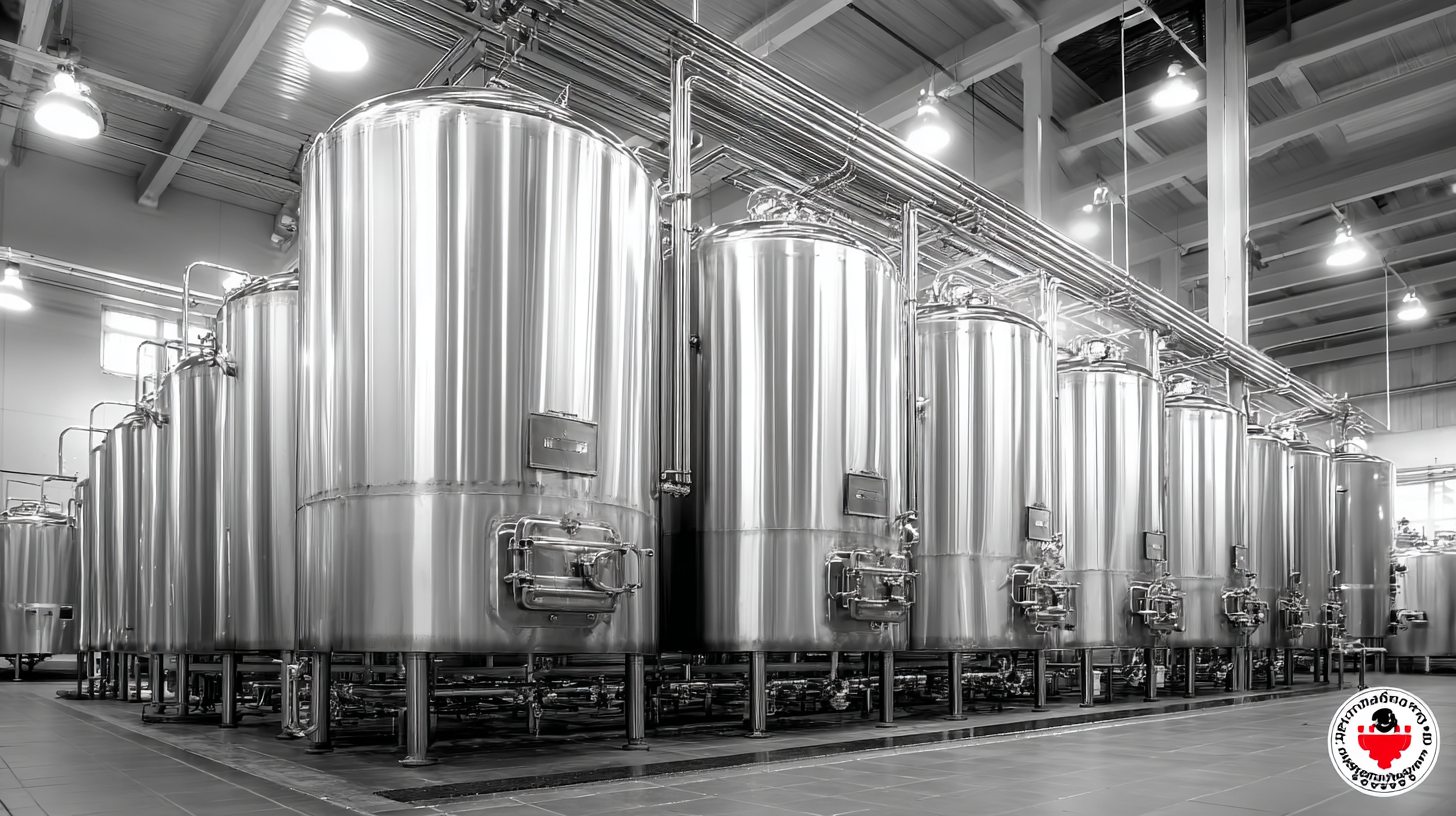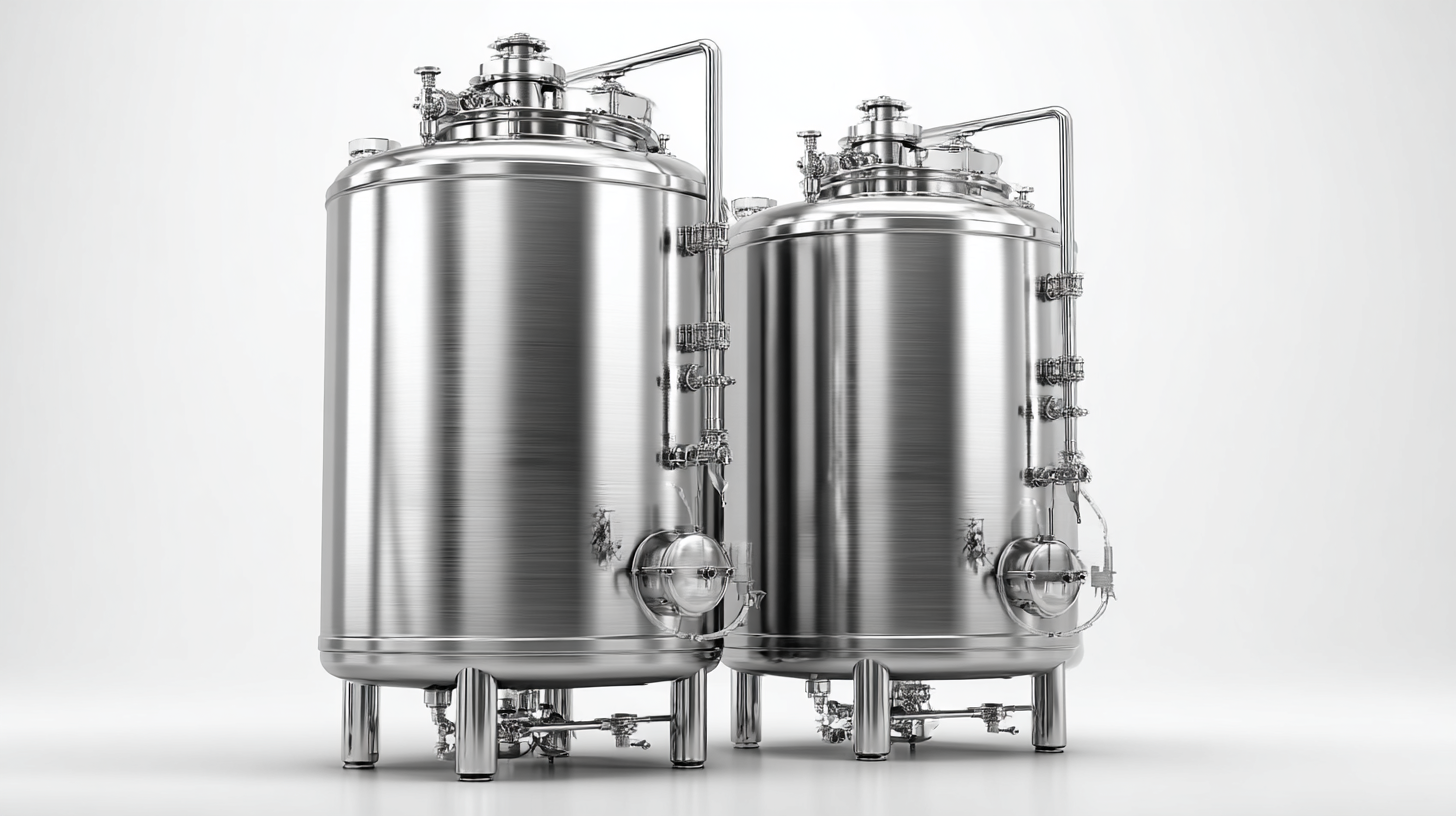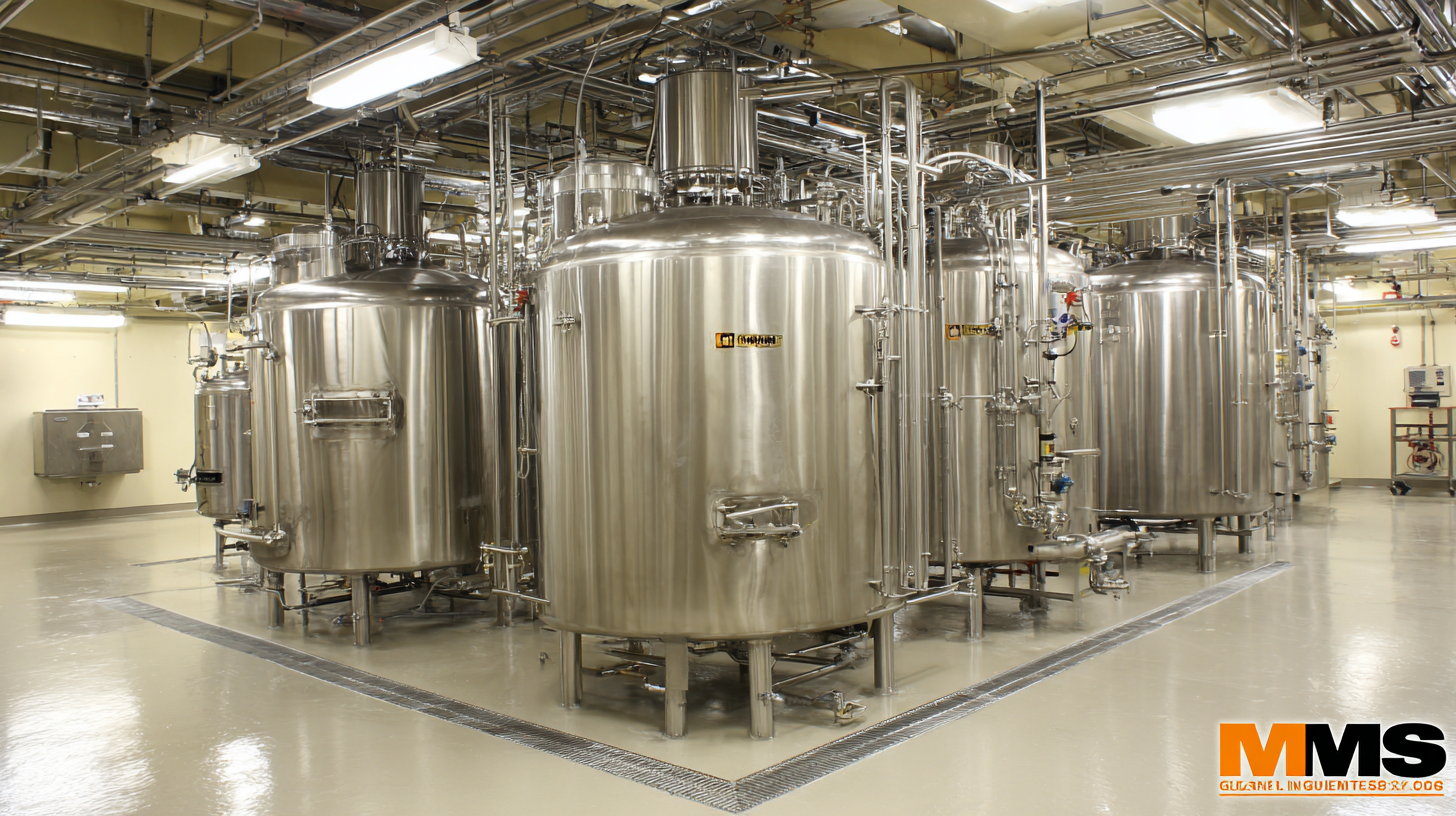
In today's competitive industrial landscape, the demand for high-quality Mixing Tanks Stainless Steel has surged, driven by the need for superior durability and efficiency in manufacturing processes. According to a recent market analysis from Grand View Research, the global stainless steel tank market size was valued at approximately $5.05 billion in 2021 and is projected to grow at a compound annual growth rate (CAGR) of 5.3% from 2022 to 2030.

This robust growth highlights the importance of selecting the right suppliers who comply with industry standards and import-export certifications. It is imperative for businesses to navigate through various options to find top suppliers that not only provide high-quality mixing tanks but also adhere to rigorous certification requirements, ensuring that their investments are streamlined and aligned with international quality benchmarks. This guide aims to equip you with the essential knowledge and strategies to identify reliable suppliers for your mixing tank needs in the evolving market.
Investing in high-quality stainless steel mixing tanks offers numerous benefits that extend beyond just durability and aesthetics. One of the primary advantages lies in their resistance to corrosion and chemical damage, making them ideal for a range of industries, including food and pharmaceuticals. Stainless steel's non-reactive nature ensures that the integrity of your materials is maintained, aligning perfectly with the stringent regulations that businesses must adhere to in today’s competitive landscape. This reliability not only enhances product quality but also contributes to long-term cost savings by minimizing the need for replacements and repairs.
Furthermore, the hygiene factor is paramount when considering mixing tanks, especially in sectors that prioritize food safety and cleanliness. Stainless steel surfaces are easy to clean and sanitize, reducing the risk of contamination that could compromise both safety and quality. Additionally, the sleek appearance of stainless steel mixing tanks can enhance any production environment, projecting a professional image to your clients and stakeholders. As industries increasingly embrace sustainable practices, high-quality stainless steel options become a win-win investment, marrying functionality with eco-friendliness for a better future.
Stainless steel has become the preferred material for industrial mixing tanks due to its superior properties. One of the primary advantages of stainless steel is its corrosion resistance. In industries where chemical reactions are common, using tanks made from materials that can withstand harsh conditions is essential. Stainless steel does not rust or corrode easily, ensuring that the integrity of both the tank and the product being mixed remains intact.
When selecting a mixing tank, consider the ease of cleaning associated with stainless steel. The smooth surface of stainless steel prevents the buildup of residues, which is crucial for maintaining hygiene in the food and pharmaceutical industries. By investing in stainless steel tanks, you can reduce downtime associated with cleaning and maintenance, ultimately increasing productivity.
Tips for finding the right supplier for stainless steel mixing tanks include assessing their reputation in the industry. Look for suppliers who offer detailed specifications and have experience catering to your specific mixing needs. Additionally, inquire about the availability of custom solutions, as this can be essential for optimization in unique applications. Always request quotes and compare prices to ensure you are getting the best value for your investment.
When searching for top-quality stainless steel mixing tanks, it’s crucial to focus on specific key features that ensure the tank meets your operational needs. One of the primary aspects to consider is the material grade. Stainless steel comes in various grades, with 304 and 316 being the most common in mixing tanks. Grade 316, specifically, offers enhanced corrosion resistance, making it more suitable for mixing aggressive chemicals or food products.

Another essential feature is the tank's design. Look for tanks with a conical bottom, as this facilitates efficient mixing and complete drainage, thereby reducing wastage. Additionally, consider the tank's insulation properties if temperature control is critical for your processes. Insulated tanks can maintain product temperatures and minimize energy costs. Finally, review the tank's capacity and dimensional specifications to ensure it will fit your space and meet your production demands effectively, leading to seamless operation and optimal performance in your mixing applications.
When selecting the right supplier for stainless steel mixing tanks, it's crucial to consider several key factors to ensure beneficial partnerships. According to a report by MarketsandMarkets, the global stainless steel tank market is projected to reach $2.29 billion by 2026, reflecting a growing demand for durable and hygienic mixing solutions across various industries. This growth emphasizes the need for suppliers that offer not only high-quality tanks but also an understanding of industry-specific requirements, such as adherence to food safety standards in the food and beverage sector.
Moreover, assessing a supplier's technological capabilities is essential. A study from Grand View Research indicates that suppliers with advanced manufacturing technologies can reduce lead times by up to 30%. This means that when choosing a supplier, companies should inquire about their production processes and quality control measures. Additionally, customer support and after-sales service play a significant role. A report by Supply Chain Dive highlights that businesses experience a 25% increase in operational efficiency when working with suppliers that provide comprehensive support throughout the lifecycle of their products. Thus, evaluating these aspects can greatly impact the overall success of procuring stainless steel mixing tanks tailored to your operational needs.
When it comes to enhancing the longevity of your stainless steel mixing tanks, regular maintenance is key. This includes thorough inspections to identify any potential issues before they escalate. Just like water supply tanks, mixing tanks benefit from routine checks that ensure the integrity of the materials and functionality of the equipment. Look out for signs of wear, corrosion, or leaks, as these can compromise tank performance and lead to costly repairs down the line.
Additionally, proper cleaning techniques should be employed to keep your mixing tanks in optimal condition. Using suitable cleaning agents that are safe for stainless steel will help prevent contamination and degradation of the tank's surface. Regularly flushing out residues and ensuring that the tank is free from any algae or buildup can significantly extend its lifespan. By prioritizing these maintenance practices, you not only preserve the quality of your mixing processes but also enhance the overall efficiency and safety of your operations.

